
Happy Halloween Days
Halloween (also spelled Hallowe'en) is an annual holiday celebrated on October 31. It has roots in the Celtic festival of Samhain and the Christian holy day of All Saints. It is largely a secular celebration but some have expressed strong feelings about perceived religious overtones.Irish immigrants carried versions of the tradition to North America during Ireland's Great Famine of the 1840s.
The day is often associated with orange and black, and is strongly associated with symbols like the jack-o'-lantern. Halloween activities include trick-or-treating, wearing costumes and attending costume parties, ghost tours, bonfires, visiting haunted attractions, pranks, reading scary stories, and watching horror films.
History
Halloween has origins in the ancient Gaelic festival known as Samhain (pronounced sow-in or sau-an), which is dervied from Old Irish and means roughly "summer's end".A similar festival was held by the ancient Britons and is known as Calan Gaeaf (pronounced kalan-geyf). The festival of Samhain celebrates the end of the "lighter half" of the year and beginning of the "darker half", and is sometimes regarded as the "Celtic New Year".
The celebration has some elements of a festival of the dead. The ancient Gaels believed that the border between this world and the Otherworld became thin on Samhain, allowing spirits (both harmless and harmful) to pass through. The family's ancestors were honoured and invited home whilst harmful spirits were warded off. It is believed that the need to ward off harmful spirits led to the wearing of costumes and masks. Their purpose was to disguise oneself as a harmful spirit and thus avoid harm. In Scotland the spirits were impersonated by young men dressed in white with masked, veiled or blackened faces.
Samhain was also a time to take stock of food supplies and slaughter livestock for winter stores. Bonfires played a large part in the festivities. All other fires were doused and each home lit their hearth from the bonfire. The bones of slaughtered livestock were cast into its flames. Sometimes two bonfires would be built side-by-side, and people and their livestock would walk between them as a cleansing ritual.
Another common practise was divination, which often involved the use of food and drink
Origin of name
The term Halloween, originally spelled Hallowe’en, is shortened from All Hallows' Even – e'en is a shortening of even, which is a shortening of evening. This is ultimately dervied from the Old English Eallra Hālgena ǣfen.[11] It is now known as All Saints' Day.
A time of pagan festivities,Popes Gregory III (731–741) and Gregory IV (827–844) tried to supplant it with the Christian holiday (All Saints' Day) by moving it from May 13 to November 1.
In the 800s, the Church measured the day as starting at sunset, in accordance with the Florentine calendar. Although All Saints' Day is now considered to occur one day after Halloween, the two holidays were once celebrated on the same day.
Symbols
On All Hallows’ eve, the ancient Celts would place a skeleton on their window sill to represent the departed. Originating in Europe, these lanterns were first carved from a turnip or rutabaga. Believing that the head was the most powerful part of the body, containing the spirit and the knowledge, the Celts used the "head" of the vegetable to frighten off harmful spirits. Welsh, Irish and British myth are full of legends of the Brazen Head, which may be a folk memory of the widespread ancient Celtic practice of headhunting – the results of which were often nailed to a door lintel or brought to the fireside to speak their wisdom. The name jack-o'-lantern can be traced back to the Irish legend of Stingy Jack, a greedy, gambling, hard-drinking old farmer. He tricked the devil into climbing a tree and trapped him by carving a cross into the tree trunk. In revenge, the devil placed a curse on Jack, condemning him to forever wander the earth at night with the only light he had: a candle inside of a hollowed turnip. The carving of pumpkins is associated with Halloween in North America where pumpkins are both readily available and much larger- making them easier to carve than turnips. Many families that celebrate Halloween carve a pumpkin into a frightening or comical face and place it on their doorstep after dark. The American tradition of carving pumpkins preceded the Great Famine period of Irish immigration and was originally associated with harvest time in general, not becoming specifically associated with Halloween until the mid-to-late 1800s.
The imagery surrounding Halloween is largely a mix of the Halloween season itself, works of Gothic and horror literature, in particular novels Frankenstein and Dracula, and nearly a century of work from American filmmakers and graphic artists, and British Hammer Horror productions, also a rather commercialized take on the dark and mysterious. Halloween imagery tends to involve death, evil, the occult, magic, or mythical monsters. Traditional characters include the Devil, the Grim Reaper, ghosts, ghouls, demons, witches, pumpkin-men, goblins, vampires, werewolves, martians, zombies, mummies, pirates, skeletons, black cats, spiders, bats, owls, crows, and vultures.[
Particularly in America, symbolism is inspired by classic horror films (which contain fictional figures like Frankenstein's monster and The Mummy). Elements of the autumn season, such as pumpkins, corn husks, and scarecrows, are also prevalent. Homes are often decorated with these types of symbols around Halloween.
The two main colors associated with Halloween are orange and black.
วันฮาโลวีน/Halloween Dayวันที่ 31 ตุลาคม ของทุกปี
บรรยากาศวันฮาโลวีนที่ผู้คนจะแต่งแฟนซีเป็นผีวันฮาโลวีน (อังกฤษ: Halloween) เป็นงานฉลองในคืนวันที่ 31 ตุลาคม ในประเทศทางตะวันตก เด็กๆ จะแต่งกายเป็นภูตผีปีศาจพากันชักชวนเพื่อนฝูงออกไปงานฉลอง มีการประดับประดาแสงไฟ และที่สำคัญคือแกะสลักฟักทองเป็นโคมไฟ เรียกว่า แจ๊ก-โอ'-แลนเทิร์น (jack-o'-lantern)
การฉลองวันฮาโลวีนนิยมจัดกันในสหรัฐอเมริกา ไอร์แลนด์ สหราชอาณาจักร แคนาดา และยังมีในออสเตรเลีย กับนิวซีแลนด์ด้วย รวมถึงประเทศอื่นในทวีปยุโรปก็นิยมจัดงานวันฮาโลวีนเพื่อความสนุกสนาน
ประวัติวันฮาโลวีน
วันที่ 31 ต.ค. เป็นวันที่ชาว เคลต์ (Celt) ซึ่งเป็นชนพื้นเมืองเผ่าหนึ่งในไอร์แลนด์ ถือกันว่า เป็นวันสิ้นสุดของฤดูร้อน และวันต่อมา คือ วันที่ 1 พ.ย. เป็นวันขึ้นปีใหม่ ซึ่งในวันที่ 31 ต.ค. นี่เองที่ชาวเคลต์เชื่อว่า เป็นวันที่มิติคนตาย และคนเป็นจะถูกเชื่อมโยงเข้าด้วยกัน และวิญญาณของผู้ที่เสียชีวิตในปีที่ผ่านมาจะเที่ยวหาร่างของคนเป็นเพื่อสิงสู่ เพื่อที่จะได้มีชีวิตขึ้นอีกครั้งหนึ่ง เดือดร้อนถึงคนเป็น ต้องหาทุกวิถีทางที่จะไม่ให้วิญญาณมาสิงสู่ร่างตน ชาวเคลต์จึงปิดไฟทุกดวงในบ้าน ให้อากาศหนาวเย็น และไม่เป็นที่พึงปรารถนาของบรรดาผีร้าย นอกจากนี้ยังพยายามแต่งกายให้แปลกประหลาด ปลอมตัวเป็นผีร้าย และส่งเสียงดังอึกทึก เพื่อให้ผีตัวจริงตกใจหนีหายสาบสูญไป
โคมรูปฟักทอง แจ๊ก-โอ'-แลนเทิร์นบางตำนานยังเล่าถึงขนาดว่า มีการเผา "คนที่คิดว่าถูกผีร้ายสิง" เป็นการเชือดไก่ให้ผีกลัวอีกต่างหาก แต่นั่นเป็นเหตุการณ์ที่เกิดขึ้นตั้งแต่ก่อนคริสตกาล ที่ความคิดเรื่องผีสางยังฝังรากลึกในจิตใจมนุษย์ ต่อมาในศตวรรษแรกแห่งคริสตกาล ชาวโรมันรับประเพณีฮาโลวีนมาจากชาวเคลต์แต่ได้ตัดการเผาร่างคนที่ถูกผีสิงออก เปลี่ยนเป็นการเผาหุ่นแทน กาลเวลาผ่านไป ความเชื่อเรื่องผีจะสิงสูร่างมนุษย์เสื่อมถอยลงตามลำดับ ฮาโลวีนกลายเป็นเพียงพิธีการ การแต่งตัวเป็นผี แม่มด สัตว์ประหลาดตามแต่จะสร้างสรรค์กันไป ประเพณีฮาโลวีนเดินทางมาถึงอเมริกาในทศวรรษที่ 1840 โดยชาวไอริชที่อพยพมายังอเมริกา สำหรับประเพณี ทริกออร์ทรีต (Trick or Treat แปลว่า หลอกหรือเลี้ยง) นั้น เริ่มขึ้นในราวคริสต์ศตวรรษที่ 9 โดยชาวยุโรป ซึ่งถือว่า วันที่ 2 พ.ย. เป็นวัน 'All Souls' พวกเขาจะเดินร้องขอ 'ขนมสำหรับวิญญาณ' (soul cake) จากหมู่บ้านหนึ่งไปยังอีกหมู่บ้านหนึ่ง โดยเชื่อว่า ยิ่งให้ขนมเค้กมากเท่าไร วิญญาณของญาติผู้บริจาคก็ได้รับผลบุญ ทำให้มีโอกาสขึ้นสวรรค์ได้มากเท่านั้น
การเล่น trick or treat ตามบ้านคนส่วนตำนานที่เกี่ยวกับฟักทองนั้น เป็นตำนานพื้นบ้านของชาวไอริช ที่กล่าวถึง แจ๊คจอมตืด ซึ่งเป็นนักเล่นกลจอมขี้เมา วันหนึ่งเขาหลอกล่อปีศาจขึ้นไปบนต้นไม้ และเขียนกากบาทไว้ที่โคนต้นไม้ ทำให้ปีศาจลงมาไม่ได้ จากนั้นเขาได้ทำข้อตกลงกับปีศาจ 'ห้ามนำสิ่งไม่ดีมาหลอกล่อเขาอีก' แล้วเขาจะปล่อยปีศาจลงจากต้นไม้ เมื่อแจ็คตายลง เขาปฏิเสธที่จะขึ้นสวรรค์ ขณะเดียวกันปฏิเสธที่จะลงนรก ปีศาจจึงให้ถ่านที่กำลังคุแก่เขา เพื่อเอาไว้ปัดเป่าความหนาวเย็นท่ามกลางความมืดมิด และแจ็คได้นำถ่านนี้ใส่ไว้ในหัวผักกาดเทอนิพที่ถูกเจาะให้กลวง เพื่อให้ไฟลุกโชติช่วงได้นานขึ้น ชาวไอริชจึงแกะสลักหัวผักกาดเทอนิพ และใส่ไฟในด้านใน อันเป็นอีกสัญลักษณ์ของวันฮาโลวีน เพื่อระลึกถึง 'การหยุดยั้งความชั่ว' Trick or Treat เพื่อส่งผลบุญให้กับญาติผู้ล่วงลับ และพิธีทางศาสนาเพื่อทำบุญวันปีใหม่ แต่เมื่อมีการฉลองฮาโลวีนในสหรัฐอเมริกา ชาวอเมริกาพบว่า ฟักทองหาง่ายกว่าหัวผักกาดมาก จึงเปลี่ยนมาใช้ฟักทองแทน หัวผักกาดจึงกลายเป็นฟักทองด้วยเหตุผลฉะนี้
การเล่น trick or treat ตามบ้านคนส่วนตำนานที่เกี่ยวกับฟักทองนั้น เป็นตำนานพื้นบ้านของชาวไอริช ที่กล่าวถึง แจ๊คจอมตืด ซึ่งเป็นนักเล่นกลจอมขี้เมา วันหนึ่งเขาหลอกล่อปีศาจขึ้นไปบนต้นไม้ และเขียนกากบาทไว้ที่โคนต้นไม้ ทำให้ปีศาจลงมาไม่ได้ จากนั้นเขาได้ทำข้อตกลงกับปีศาจ 'ห้ามนำสิ่งไม่ดีมาหลอกล่อเขาอีก' แล้วเขาจะปล่อยปีศาจลงจากต้นไม้ เมื่อแจ็คตายลง เขาปฏิเสธที่จะขึ้นสวรรค์ ขณะเดียวกันปฏิเสธที่จะลงนรก ปีศาจจึงให้ถ่านที่กำลังคุแก่เขา เพื่อเอาไว้ปัดเป่าความหนาวเย็นท่ามกลางความมืดมิด และแจ็คได้นำถ่านนี้ใส่ไว้ในหัวผักกาดเทอนิพที่ถูกเจาะให้กลวง เพื่อให้ไฟลุกโชติช่วงได้นานขึ้น ชาวไอริชจึงแกะสลักหัวผักกาดเทอนิพ และใส่ไฟในด้านใน อันเป็นอีกสัญลักษณ์ของวันฮาโลวีน เพื่อระลึกถึง 'การหยุดยั้งความชั่ว' Trick or Treat เพื่อส่งผลบุญให้กับญาติผู้ล่วงลับ และพิธีทางศาสนาเพื่อทำบุญวันปีใหม่ แต่เมื่อมีการฉลองฮาโลวีนในสหรัฐอเมริกา ชาวอเมริกาพบว่า ฟักทองหาง่ายกว่าหัวผักกาดมาก จึงเปลี่ยนมาใช้ฟักทองแทน หัวผักกาดจึงกลายเป็นฟักทองด้วยเหตุผลฉะนี้
ประเพณีทริกออร์ทรีต ในสหรัฐอเมริกาคือการละเล่นอย่างหนึ่งที่เด็กๆ เฝ้ารอคอย ในวันฮาโลวีนตามบ้านเรือนจะตกแต่งด้วยโคมไฟฟักทองและตุ๊กตาหุ่นฟางที่เป็นส่วนหนึ่งของเทศกาลประเพณีเก็บเกี่ยว (Harvest) ในช่วงเดียวกันนั้น แต่ละบ้านจะเตรียมขนมหวานที่ทำเป็นรูปเม็ดข้าวโพดสีขาวเหลืองส้มในเม็ดเดียวกัน เรียกว่า Corn Candy และขนมอื่นๆไว้เตรียมคอยท่า ส่วนเด็กๆ ในละแวกบ้านก็จะแต่งตัวแฟนซีเป็นภูตผีมาเคาะตามประตูบ้าน โดยเน้นบ้านที่มีโคมไฟฟักทองประดับ (เพราะมีความหมายโดยนัยว่าต้อนรับพวกเขา) พร้อมกับถามว่า "Trick or treat?" เจ้าของบ้านมีสิทธิที่จะตอบ treat ด้วยการยอมแพ้ มอบขนมหวานให้ภูตผี(เด็ก)เหล่านั้น ราวกับว่าช่างน่ากลัวเหลือเกิน หรือเลือกตอบ trick เพื่อท้าทายให้ภูตผีเหล่านั้นอาละวาด ซึ่งก็อาจเป็นอะไรได้ ตั้งแต่แลบลิ้นปลิ้นตาหลอกหลอน ไปจนถึงขั้นทำลายข้าวของเล็กๆ น้อยๆ แล้วอาจจบลงด้วยการ treat เด็กๆ ด้วยขนมในที่สุด
ประเพณีทริกออร์ทรีต ในสหรัฐอเมริกาคือการละเล่นอย่างหนึ่งที่เด็กๆ เฝ้ารอคอย ในวันฮาโลวีนตามบ้านเรือนจะตกแต่งด้วยโคมไฟฟักทองและตุ๊กตาหุ่นฟางที่เป็นส่วนหนึ่งของเทศกาลประเพณีเก็บเกี่ยว (Harvest) ในช่วงเดียวกันนั้น แต่ละบ้านจะเตรียมขนมหวานที่ทำเป็นรูปเม็ดข้าวโพดสีขาวเหลืองส้มในเม็ดเดียวกัน เรียกว่า Corn Candy และขนมอื่นๆไว้เตรียมคอยท่า ส่วนเด็กๆ ในละแวกบ้านก็จะแต่งตัวแฟนซีเป็นภูตผีมาเคาะตามประตูบ้าน โดยเน้นบ้านที่มีโคมไฟฟักทองประดับ (เพราะมีความหมายโดยนัยว่าต้อนรับพวกเขา) พร้อมกับถามว่า "Trick or treat?" เจ้าของบ้านมีสิทธิที่จะตอบ treat ด้วยการยอมแพ้ มอบขนมหวานให้ภูตผี(เด็ก)เหล่านั้น ราวกับว่าช่างน่ากลัวเหลือเกิน หรือเลือกตอบ trick เพื่อท้าทายให้ภูตผีเหล่านั้นอาละวาด ซึ่งก็อาจเป็นอะไรได้ ตั้งแต่แลบลิ้นปลิ้นตาหลอกหลอน ไปจนถึงขั้นทำลายข้าวของเล็กๆ น้อยๆ แล้วอาจจบลงด้วยการ treat เด็กๆ ด้วยขนมในที่สุด
Halloween (also spelled Hallowe'en) is an annual holiday celebrated on October 31. It has roots in the Celtic festival of Samhain and the Christian holy day of All Saints. It is largely a secular celebration but some have expressed strong feelings about perceived religious overtones.Irish immigrants carried versions of the tradition to North America during Ireland's Great Famine of the 1840s.
The day is often associated with orange and black, and is strongly associated with symbols like the jack-o'-lantern. Halloween activities include trick-or-treating, wearing costumes and attending costume parties, ghost tours, bonfires, visiting haunted attractions, pranks, reading scary stories, and watching horror films.
History
Halloween has origins in the ancient Gaelic festival known as Samhain (pronounced sow-in or sau-an), which is dervied from Old Irish and means roughly "summer's end".A similar festival was held by the ancient Britons and is known as Calan Gaeaf (pronounced kalan-geyf). The festival of Samhain celebrates the end of the "lighter half" of the year and beginning of the "darker half", and is sometimes regarded as the "Celtic New Year".
The celebration has some elements of a festival of the dead. The ancient Gaels believed that the border between this world and the Otherworld became thin on Samhain, allowing spirits (both harmless and harmful) to pass through. The family's ancestors were honoured and invited home whilst harmful spirits were warded off. It is believed that the need to ward off harmful spirits led to the wearing of costumes and masks. Their purpose was to disguise oneself as a harmful spirit and thus avoid harm. In Scotland the spirits were impersonated by young men dressed in white with masked, veiled or blackened faces.
Samhain was also a time to take stock of food supplies and slaughter livestock for winter stores. Bonfires played a large part in the festivities. All other fires were doused and each home lit their hearth from the bonfire. The bones of slaughtered livestock were cast into its flames. Sometimes two bonfires would be built side-by-side, and people and their livestock would walk between them as a cleansing ritual.
Another common practise was divination, which often involved the use of food and drink
Origin of name
The term Halloween, originally spelled Hallowe’en, is shortened from All Hallows' Even – e'en is a shortening of even, which is a shortening of evening. This is ultimately dervied from the Old English Eallra Hālgena ǣfen.[11] It is now known as All Saints' Day.
A time of pagan festivities,Popes Gregory III (731–741) and Gregory IV (827–844) tried to supplant it with the Christian holiday (All Saints' Day) by moving it from May 13 to November 1.
In the 800s, the Church measured the day as starting at sunset, in accordance with the Florentine calendar. Although All Saints' Day is now considered to occur one day after Halloween, the two holidays were once celebrated on the same day.
Symbols
On All Hallows’ eve, the ancient Celts would place a skeleton on their window sill to represent the departed. Originating in Europe, these lanterns were first carved from a turnip or rutabaga. Believing that the head was the most powerful part of the body, containing the spirit and the knowledge, the Celts used the "head" of the vegetable to frighten off harmful spirits. Welsh, Irish and British myth are full of legends of the Brazen Head, which may be a folk memory of the widespread ancient Celtic practice of headhunting – the results of which were often nailed to a door lintel or brought to the fireside to speak their wisdom. The name jack-o'-lantern can be traced back to the Irish legend of Stingy Jack, a greedy, gambling, hard-drinking old farmer. He tricked the devil into climbing a tree and trapped him by carving a cross into the tree trunk. In revenge, the devil placed a curse on Jack, condemning him to forever wander the earth at night with the only light he had: a candle inside of a hollowed turnip. The carving of pumpkins is associated with Halloween in North America where pumpkins are both readily available and much larger- making them easier to carve than turnips. Many families that celebrate Halloween carve a pumpkin into a frightening or comical face and place it on their doorstep after dark. The American tradition of carving pumpkins preceded the Great Famine period of Irish immigration and was originally associated with harvest time in general, not becoming specifically associated with Halloween until the mid-to-late 1800s.
The imagery surrounding Halloween is largely a mix of the Halloween season itself, works of Gothic and horror literature, in particular novels Frankenstein and Dracula, and nearly a century of work from American filmmakers and graphic artists, and British Hammer Horror productions, also a rather commercialized take on the dark and mysterious. Halloween imagery tends to involve death, evil, the occult, magic, or mythical monsters. Traditional characters include the Devil, the Grim Reaper, ghosts, ghouls, demons, witches, pumpkin-men, goblins, vampires, werewolves, martians, zombies, mummies, pirates, skeletons, black cats, spiders, bats, owls, crows, and vultures.[
Particularly in America, symbolism is inspired by classic horror films (which contain fictional figures like Frankenstein's monster and The Mummy). Elements of the autumn season, such as pumpkins, corn husks, and scarecrows, are also prevalent. Homes are often decorated with these types of symbols around Halloween.
The two main colors associated with Halloween are orange and black.
วันฮาโลวีน/Halloween Dayวันที่ 31 ตุลาคม ของทุกปี
บรรยากาศวันฮาโลวีนที่ผู้คนจะแต่งแฟนซีเป็นผีวันฮาโลวีน (อังกฤษ: Halloween) เป็นงานฉลองในคืนวันที่ 31 ตุลาคม ในประเทศทางตะวันตก เด็กๆ จะแต่งกายเป็นภูตผีปีศาจพากันชักชวนเพื่อนฝูงออกไปงานฉลอง มีการประดับประดาแสงไฟ และที่สำคัญคือแกะสลักฟักทองเป็นโคมไฟ เรียกว่า แจ๊ก-โอ'-แลนเทิร์น (jack-o'-lantern)
การฉลองวันฮาโลวีนนิยมจัดกันในสหรัฐอเมริกา ไอร์แลนด์ สหราชอาณาจักร แคนาดา และยังมีในออสเตรเลีย กับนิวซีแลนด์ด้วย รวมถึงประเทศอื่นในทวีปยุโรปก็นิยมจัดงานวันฮาโลวีนเพื่อความสนุกสนาน
ประวัติวันฮาโลวีน
วันที่ 31 ต.ค. เป็นวันที่ชาว เคลต์ (Celt) ซึ่งเป็นชนพื้นเมืองเผ่าหนึ่งในไอร์แลนด์ ถือกันว่า เป็นวันสิ้นสุดของฤดูร้อน และวันต่อมา คือ วันที่ 1 พ.ย. เป็นวันขึ้นปีใหม่ ซึ่งในวันที่ 31 ต.ค. นี่เองที่ชาวเคลต์เชื่อว่า เป็นวันที่มิติคนตาย และคนเป็นจะถูกเชื่อมโยงเข้าด้วยกัน และวิญญาณของผู้ที่เสียชีวิตในปีที่ผ่านมาจะเที่ยวหาร่างของคนเป็นเพื่อสิงสู่ เพื่อที่จะได้มีชีวิตขึ้นอีกครั้งหนึ่ง เดือดร้อนถึงคนเป็น ต้องหาทุกวิถีทางที่จะไม่ให้วิญญาณมาสิงสู่ร่างตน ชาวเคลต์จึงปิดไฟทุกดวงในบ้าน ให้อากาศหนาวเย็น และไม่เป็นที่พึงปรารถนาของบรรดาผีร้าย นอกจากนี้ยังพยายามแต่งกายให้แปลกประหลาด ปลอมตัวเป็นผีร้าย และส่งเสียงดังอึกทึก เพื่อให้ผีตัวจริงตกใจหนีหายสาบสูญไป
โคมรูปฟักทอง แจ๊ก-โอ'-แลนเทิร์นบางตำนานยังเล่าถึงขนาดว่า มีการเผา "คนที่คิดว่าถูกผีร้ายสิง" เป็นการเชือดไก่ให้ผีกลัวอีกต่างหาก แต่นั่นเป็นเหตุการณ์ที่เกิดขึ้นตั้งแต่ก่อนคริสตกาล ที่ความคิดเรื่องผีสางยังฝังรากลึกในจิตใจมนุษย์ ต่อมาในศตวรรษแรกแห่งคริสตกาล ชาวโรมันรับประเพณีฮาโลวีนมาจากชาวเคลต์แต่ได้ตัดการเผาร่างคนที่ถูกผีสิงออก เปลี่ยนเป็นการเผาหุ่นแทน กาลเวลาผ่านไป ความเชื่อเรื่องผีจะสิงสูร่างมนุษย์เสื่อมถอยลงตามลำดับ ฮาโลวีนกลายเป็นเพียงพิธีการ การแต่งตัวเป็นผี แม่มด สัตว์ประหลาดตามแต่จะสร้างสรรค์กันไป ประเพณีฮาโลวีนเดินทางมาถึงอเมริกาในทศวรรษที่ 1840 โดยชาวไอริชที่อพยพมายังอเมริกา สำหรับประเพณี ทริกออร์ทรีต (Trick or Treat แปลว่า หลอกหรือเลี้ยง) นั้น เริ่มขึ้นในราวคริสต์ศตวรรษที่ 9 โดยชาวยุโรป ซึ่งถือว่า วันที่ 2 พ.ย. เป็นวัน 'All Souls' พวกเขาจะเดินร้องขอ 'ขนมสำหรับวิญญาณ' (soul cake) จากหมู่บ้านหนึ่งไปยังอีกหมู่บ้านหนึ่ง โดยเชื่อว่า ยิ่งให้ขนมเค้กมากเท่าไร วิญญาณของญาติผู้บริจาคก็ได้รับผลบุญ ทำให้มีโอกาสขึ้นสวรรค์ได้มากเท่านั้น
การเล่น trick or treat ตามบ้านคนส่วนตำนานที่เกี่ยวกับฟักทองนั้น เป็นตำนานพื้นบ้านของชาวไอริช ที่กล่าวถึง แจ๊คจอมตืด ซึ่งเป็นนักเล่นกลจอมขี้เมา วันหนึ่งเขาหลอกล่อปีศาจขึ้นไปบนต้นไม้ และเขียนกากบาทไว้ที่โคนต้นไม้ ทำให้ปีศาจลงมาไม่ได้ จากนั้นเขาได้ทำข้อตกลงกับปีศาจ 'ห้ามนำสิ่งไม่ดีมาหลอกล่อเขาอีก' แล้วเขาจะปล่อยปีศาจลงจากต้นไม้ เมื่อแจ็คตายลง เขาปฏิเสธที่จะขึ้นสวรรค์ ขณะเดียวกันปฏิเสธที่จะลงนรก ปีศาจจึงให้ถ่านที่กำลังคุแก่เขา เพื่อเอาไว้ปัดเป่าความหนาวเย็นท่ามกลางความมืดมิด และแจ็คได้นำถ่านนี้ใส่ไว้ในหัวผักกาดเทอนิพที่ถูกเจาะให้กลวง เพื่อให้ไฟลุกโชติช่วงได้นานขึ้น ชาวไอริชจึงแกะสลักหัวผักกาดเทอนิพ และใส่ไฟในด้านใน อันเป็นอีกสัญลักษณ์ของวันฮาโลวีน เพื่อระลึกถึง 'การหยุดยั้งความชั่ว' Trick or Treat เพื่อส่งผลบุญให้กับญาติผู้ล่วงลับ และพิธีทางศาสนาเพื่อทำบุญวันปีใหม่ แต่เมื่อมีการฉลองฮาโลวีนในสหรัฐอเมริกา ชาวอเมริกาพบว่า ฟักทองหาง่ายกว่าหัวผักกาดมาก จึงเปลี่ยนมาใช้ฟักทองแทน หัวผักกาดจึงกลายเป็นฟักทองด้วยเหตุผลฉะนี้
การเล่น trick or treat ตามบ้านคนส่วนตำนานที่เกี่ยวกับฟักทองนั้น เป็นตำนานพื้นบ้านของชาวไอริช ที่กล่าวถึง แจ๊คจอมตืด ซึ่งเป็นนักเล่นกลจอมขี้เมา วันหนึ่งเขาหลอกล่อปีศาจขึ้นไปบนต้นไม้ และเขียนกากบาทไว้ที่โคนต้นไม้ ทำให้ปีศาจลงมาไม่ได้ จากนั้นเขาได้ทำข้อตกลงกับปีศาจ 'ห้ามนำสิ่งไม่ดีมาหลอกล่อเขาอีก' แล้วเขาจะปล่อยปีศาจลงจากต้นไม้ เมื่อแจ็คตายลง เขาปฏิเสธที่จะขึ้นสวรรค์ ขณะเดียวกันปฏิเสธที่จะลงนรก ปีศาจจึงให้ถ่านที่กำลังคุแก่เขา เพื่อเอาไว้ปัดเป่าความหนาวเย็นท่ามกลางความมืดมิด และแจ็คได้นำถ่านนี้ใส่ไว้ในหัวผักกาดเทอนิพที่ถูกเจาะให้กลวง เพื่อให้ไฟลุกโชติช่วงได้นานขึ้น ชาวไอริชจึงแกะสลักหัวผักกาดเทอนิพ และใส่ไฟในด้านใน อันเป็นอีกสัญลักษณ์ของวันฮาโลวีน เพื่อระลึกถึง 'การหยุดยั้งความชั่ว' Trick or Treat เพื่อส่งผลบุญให้กับญาติผู้ล่วงลับ และพิธีทางศาสนาเพื่อทำบุญวันปีใหม่ แต่เมื่อมีการฉลองฮาโลวีนในสหรัฐอเมริกา ชาวอเมริกาพบว่า ฟักทองหาง่ายกว่าหัวผักกาดมาก จึงเปลี่ยนมาใช้ฟักทองแทน หัวผักกาดจึงกลายเป็นฟักทองด้วยเหตุผลฉะนี้
ประเพณีทริกออร์ทรีต ในสหรัฐอเมริกาคือการละเล่นอย่างหนึ่งที่เด็กๆ เฝ้ารอคอย ในวันฮาโลวีนตามบ้านเรือนจะตกแต่งด้วยโคมไฟฟักทองและตุ๊กตาหุ่นฟางที่เป็นส่วนหนึ่งของเทศกาลประเพณีเก็บเกี่ยว (Harvest) ในช่วงเดียวกันนั้น แต่ละบ้านจะเตรียมขนมหวานที่ทำเป็นรูปเม็ดข้าวโพดสีขาวเหลืองส้มในเม็ดเดียวกัน เรียกว่า Corn Candy และขนมอื่นๆไว้เตรียมคอยท่า ส่วนเด็กๆ ในละแวกบ้านก็จะแต่งตัวแฟนซีเป็นภูตผีมาเคาะตามประตูบ้าน โดยเน้นบ้านที่มีโคมไฟฟักทองประดับ (เพราะมีความหมายโดยนัยว่าต้อนรับพวกเขา) พร้อมกับถามว่า "Trick or treat?" เจ้าของบ้านมีสิทธิที่จะตอบ treat ด้วยการยอมแพ้ มอบขนมหวานให้ภูตผี(เด็ก)เหล่านั้น ราวกับว่าช่างน่ากลัวเหลือเกิน หรือเลือกตอบ trick เพื่อท้าทายให้ภูตผีเหล่านั้นอาละวาด ซึ่งก็อาจเป็นอะไรได้ ตั้งแต่แลบลิ้นปลิ้นตาหลอกหลอน ไปจนถึงขั้นทำลายข้าวของเล็กๆ น้อยๆ แล้วอาจจบลงด้วยการ treat เด็กๆ ด้วยขนมในที่สุด
ประเพณีทริกออร์ทรีต ในสหรัฐอเมริกาคือการละเล่นอย่างหนึ่งที่เด็กๆ เฝ้ารอคอย ในวันฮาโลวีนตามบ้านเรือนจะตกแต่งด้วยโคมไฟฟักทองและตุ๊กตาหุ่นฟางที่เป็นส่วนหนึ่งของเทศกาลประเพณีเก็บเกี่ยว (Harvest) ในช่วงเดียวกันนั้น แต่ละบ้านจะเตรียมขนมหวานที่ทำเป็นรูปเม็ดข้าวโพดสีขาวเหลืองส้มในเม็ดเดียวกัน เรียกว่า Corn Candy และขนมอื่นๆไว้เตรียมคอยท่า ส่วนเด็กๆ ในละแวกบ้านก็จะแต่งตัวแฟนซีเป็นภูตผีมาเคาะตามประตูบ้าน โดยเน้นบ้านที่มีโคมไฟฟักทองประดับ (เพราะมีความหมายโดยนัยว่าต้อนรับพวกเขา) พร้อมกับถามว่า "Trick or treat?" เจ้าของบ้านมีสิทธิที่จะตอบ treat ด้วยการยอมแพ้ มอบขนมหวานให้ภูตผี(เด็ก)เหล่านั้น ราวกับว่าช่างน่ากลัวเหลือเกิน หรือเลือกตอบ trick เพื่อท้าทายให้ภูตผีเหล่านั้นอาละวาด ซึ่งก็อาจเป็นอะไรได้ ตั้งแต่แลบลิ้นปลิ้นตาหลอกหลอน ไปจนถึงขั้นทำลายข้าวของเล็กๆ น้อยๆ แล้วอาจจบลงด้วยการ treat เด็กๆ ด้วยขนมในที่สุด











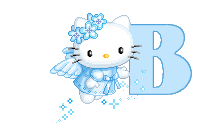
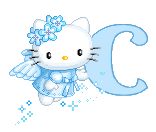
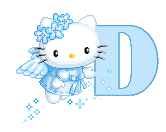
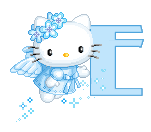
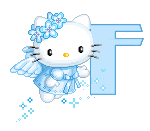
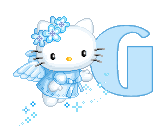
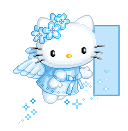
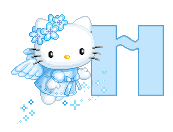
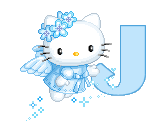

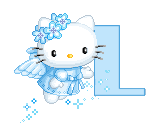
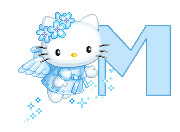
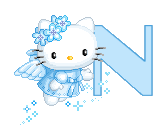
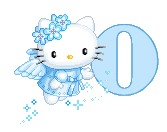
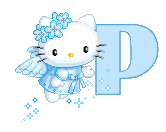
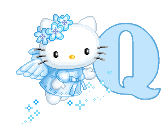
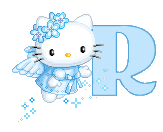
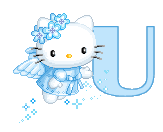
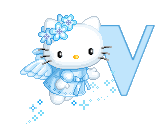

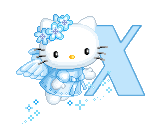
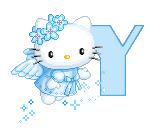
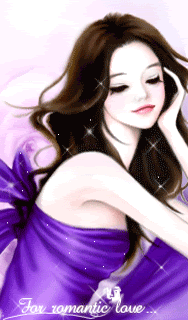
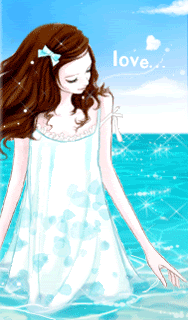


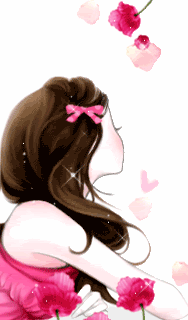
ไม่มีความคิดเห็น:
แสดงความคิดเห็น